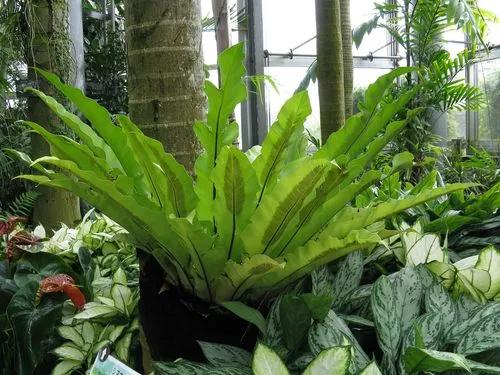If you want a ficus with a twist, Rubber Plant is the one for you. This variegated plant has very special leaves’ coloration. The red, pink, and white parts of this queen’s foliage will undoubtedly attract your visitors’ looks.
Variegated Rubber Plant Care
Ficus elastica 'Variegata'



Rubber plants are native to southern China and southern Asia. A lot of households have this greenie as a houseplant due to care simplicity. It’s a fast-growing tree that can reach 10 feet (3m) when grown indoors. Variegated Rubber plants are a result of genetic mutation, which makes certain parts of the leaves unable to produce chlorophyll, the pigment that colors leaves in green. Caring for a variegated Rubber plant isn’t very different from caring for a regular plant. Sunlight is the only thing to pay more attention to.
How to Care for the Plant

Water

Water your Rubber plant every 1-2 weeks, allowing the soil to dry out between waterings. Increase the watering frequency in summer, and decrease in winter.

Pruning

This plant grows fast and needs pruning to look nice and bushy. Just trim it to whatever length and style – Rubber plants are very resilient. Trim just above the node or a leaf scar. Wear gloves to prevent irritation from milk-like sap.

Fertilizer

Fertilize every 4-6 weeks. Liquid, granular, or slow-release fertilizer will work. Do not fertilize in winter.

Sunlight

Bright and indirect light is best. Variegated plants are less tolerant of shade than regular ones. However, keep your Rubber plant away from direct sun, as it can damage the leaves.

Soil

A rich, well-draining soil will work. Add perlite to improve drainage.

Propagation

You can propagate Rubber plants by cuttings. First, put on gloves, and choose a tool with a sharp blade. Disinfect your tool and make a cutting. The cutting should be at least 6 inches (15cm) long with at least two leaves and a leaf node close to the cut. Apply rooting hormone and plant your cutting in the new soil 2-3 inches (5-7 cm) deep. Put your cutting to the place with indirect bright light and keep the soil moist.

Temperature

Room temperature works well for the plant. 65-75ºF (18-24ºC) is optimal. Avoid sudden temperature drops and cold drafts.

Container

No special requirements for the container. Ensure proper drainage. Rubber plants are fast growers and need repotting every 1-2 years.

Fun fact

A Rubber plant got its name for a latex sap it produces. As you can guess, it was used to make Rubber.

Popularity

5,887 people already have this plant 1,560 people have added this plant to their wishlists
Discover more plants with the list below
Related articles






